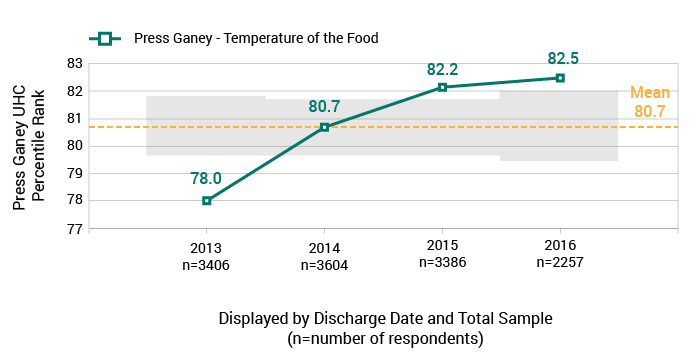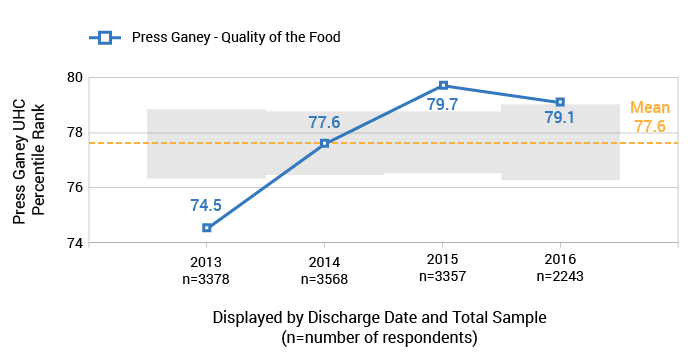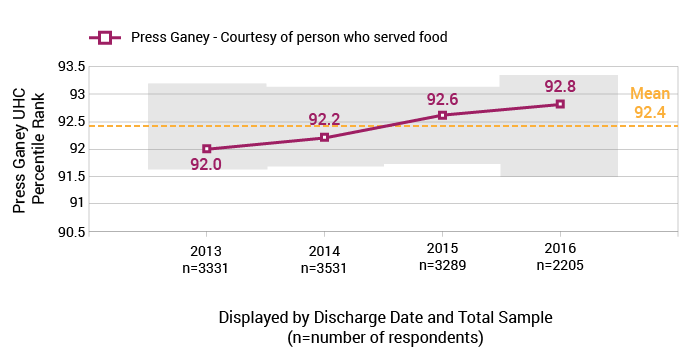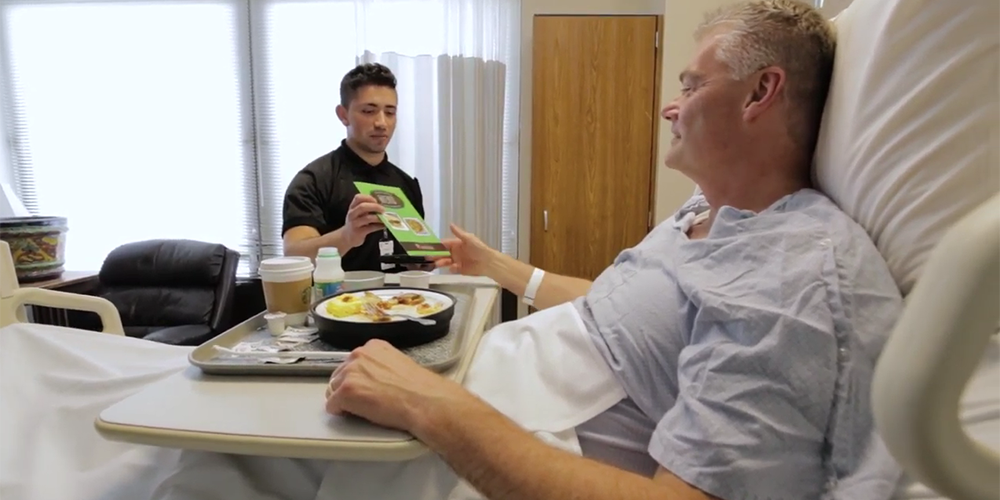The Value Equation
No matter how impressive the process, we need to check-in on the outcomes, elegantly summarized by the value equation. Nutrition tracks quality and service from the patient’s perspective by asking about temperature, quality, and courtesy. The top two costs in food service are labor and food.
Quality
Trend lines growing into and then out the top of the grey zone indicates non-trivial improvement in temperature and quality over the last 4 years.


Service
The upward trend in courtesy suggests improvement over the last 4 years, but it might not be statistically significant. Hard to get higher when you’re hugging the ceiling.

Cost
The top 2 costs in food service: Labor and Food.
Labor: (FY16) In the top quartile of similar hospitals on Labor Hours per Meal. 25th %-ile: 0.13, University Hospital: 0.10
Food: Under budget last six months on food costs, $6,800 – $49,000 per month
The Process

More Lean Behind the Scenes
Watch as Sterile Processing delivers millions of instruments to University of Utah Health’s procedural teams.
Lean Practices in Action
- Daily Huddle: A focused moment (no chairs) of communication that happens the same time every day to share what’s unique about today’s work. The daily huddle should keep team members aligned to workplace priorities, allow sharing of experience and insight, and provide face-time with leadership.
- Forcing Functions: A control in the process designed to prevent user error; that force the right action. Some forcing functions are process steps requiring conscious consideration of the process (e.g.: an OR time-out) and some are error-prevention mechanisms (e.g. a three-prong plug).
- Checklists: A common forcing function. Simple in concept but requiring multiple iterations to develop and discipline to use.
- Data-driven decision making: A decision-making method that relies on accurate data, high-quality analysis of the data, and thoughtful interpretation of the analysis coupled with domain expertise. We want data to drive decisions, but team members to make decisions.
- Flexible layout: In a lean environment, equipment is easily disconnected and moved to experiment with new layouts to adapt to change and enhance their flow. The layout should be designed in service to a simple flow across the workplace and allot minimum space to inventory.
- The Waste of Motion: Moving around within a workstation (e.g.: gathering supplies, walking between machines) doesn’t add value to the product or service and should be minimized.
- Continuous ownership: When one person or one team owns a process from beginning to end as opposed to a few tasks within it, accountability for the overall process including outcomes increases, promoting improved customer satisfaction. Every process ownership change is an opportunity for error and delay.
- Flexible roles: Flexibility in roles is a key component of work balancing. The design of a process should strive to distribute work evenly among a team. When it comes to execution perfect balance is difficult. To speed a process along to completion job roles must be flexible enough to fill the gap between process design and execution.
- Continuous flow: A style of process design that minimizes process idle time and in turn accelerates the process and lowers inventory needs, among other benefits.
Credits
Special thanks to Jennifer Schmidt and the entire Nutrition Care Services team for sharing their time and work to make this possible. Additionally, the combined creative talents of Charlie Ehlert (steadicam videography, video editing), Jen Pilgreen (time-lapse videography), and Robert Nelson (sound technician, Marriott Library) made the video possible.
Steve Johnson
Your gut tells you a process could be better than it is—how do you back that feeling up with hard data? Senior value engineer Luca Boi shows how undertaking a baseline analysis can jumpstart your improvement project.
Chief Quality Officer Sandi Gulbransen and Accreditation Manager Kemper Funk provide insight on our partnership with DNV, how accreditation contributes to the safety of our patients and staff, and what to expect during our upcoming evaluation.
Patient Experience Program Coordinator Corrie Harris and Project Administrator Shayma Salih explain how to get valuable patient feedback early in your improvement efforts by meeting with the U of U Health Patient Design Studio and Advise Utah.
